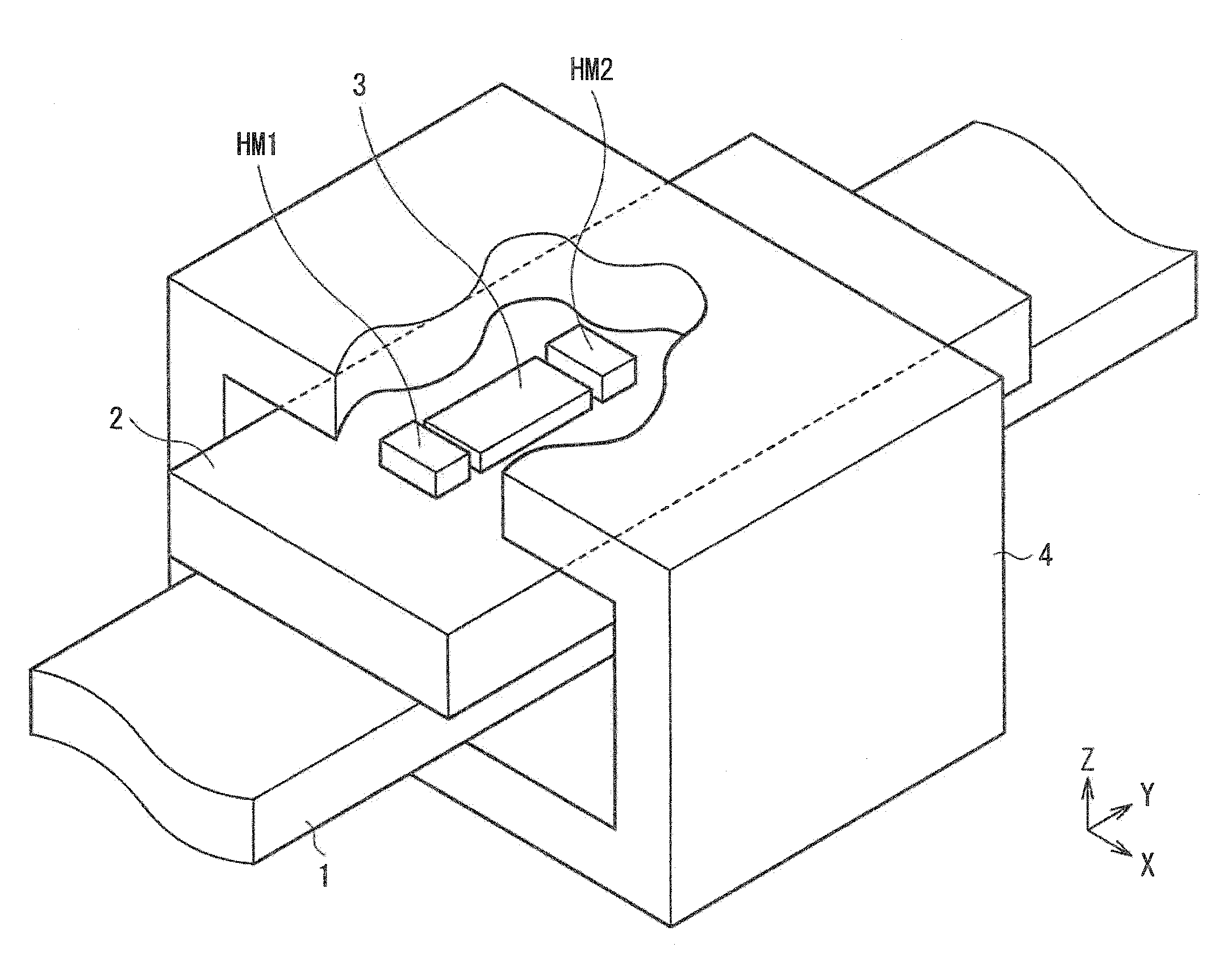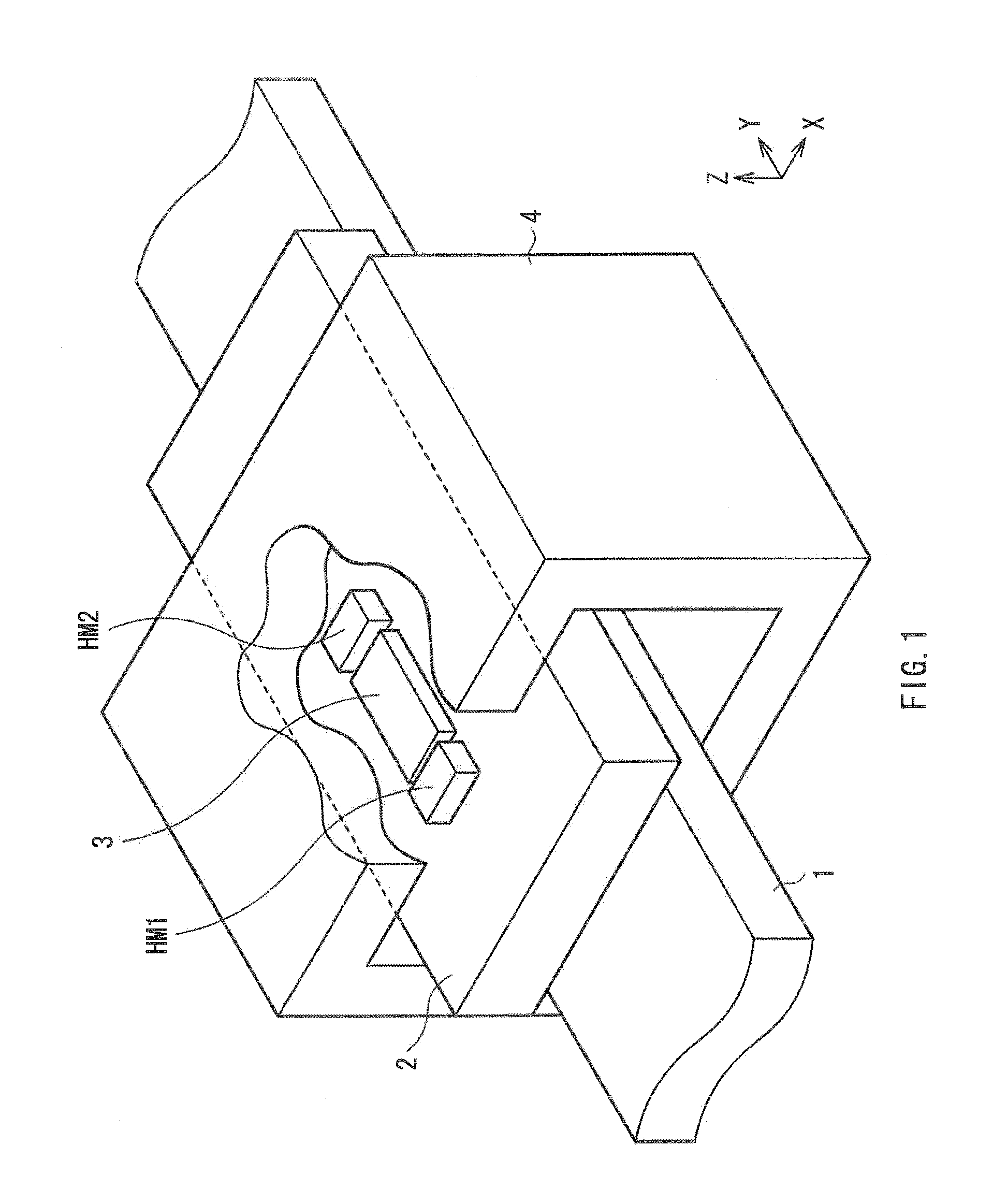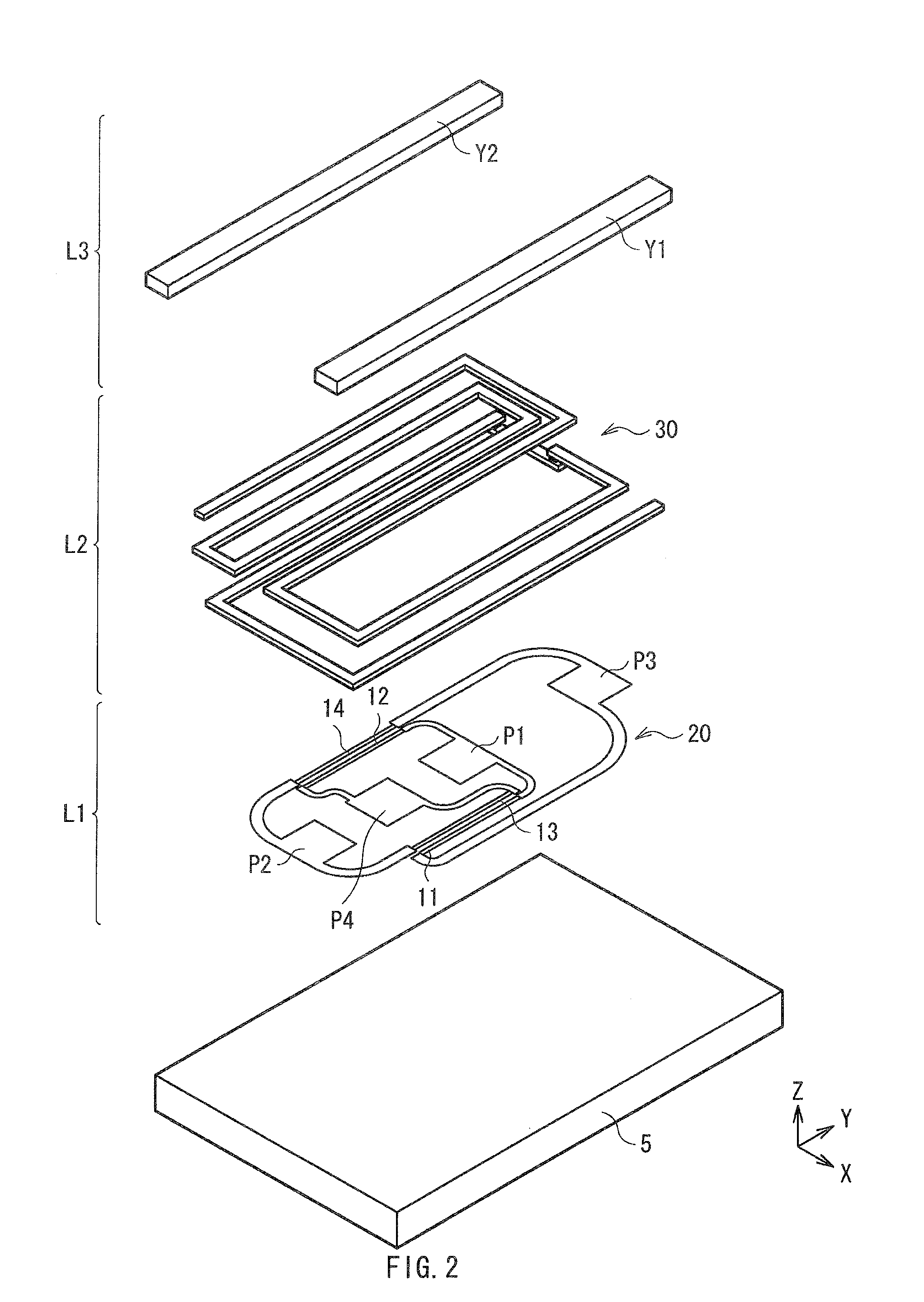Current sensor
a current sensor and current sensor technology, applied in the field of current sensor, can solve the problems of large offset output likely to be generated, large variation in connection resistance likely to occur, and difficulty in adjusting the balance between four magneto-resistive elements, etc., and achieve the effect of more effective application
- Summary
- Abstract
- Description
- Claims
- Application Information
AI Technical Summary
Benefits of technology
Problems solved by technology
Method used
Image
Examples
first embodiment
[0043]First, there is described a configuration of a current sensor as a first embodiment of the invention referring to FIG. 1 to FIG. 4. FIG. 1 is a perspective view illustrating a whole configuration of the current sensor according to the embodiment. FIG. 2 is an exploded perspective view illustrating a configuration of a sensor unit 3 which is a main part of the current sensor. FIG. 3 is a perspective view illustrating a detailed configuration of a compensation current line 30 of the sensor unit 3. Further, FIG. 4 is a sectional view of the sensor unit 3 taken along a IV-IV line of FIG. 3.
[0044]As illustrated in FIG. 1, the current sensor includes a straight conductor 1 through which a current-to-be-detected Im (described later) flows, a substrate 2 disposed in the vicinity of the conductor 1, and the sensor unit 3 disposed on the substrate 2. On the substrate 2, a pair of permanent magnets HM1 and HM2 is mounted so as to sandwich the sensor unit 3 along an extending direction (h...
second embodiment
Modification of Second Embodiment
[0078]In addition, in the embodiment, as illustrated in FIG. 13B, a pair of the line portions 31A and 31B is arranged so as to sandwich the GMR element 11 in the thickness direction. In this case, the pair of the line portions 31A and 31B is preferably provided on the respective sides of the GMR element 11 so that the centers of the line portions 31A and 31B sandwich the center of the GMR element 11. This is because the GMR element 11 is applied with the effective magnetic field which is more homogenized in the width direction. In this case, as illustrated in FIG. 13C, for example, while the pair of the line portions 31A and 31B is arranged at the positions with the equivalent distance from the GMR element 11 in the thickness direction, the widths W31A and W31B of the line portions 31A and 31B may be extended. In other words, the pair of the line portions 31A and 31B has a positional relationship of overlapping portions with each other in the thickne...
third embodiment
[0081]Next, a current sensor as a third embodiment of the invention will be described referring to FIGS. 16 to 19. In this embodiment, like reference numerals are utilized to indicate like components of the first embodiment described above, and the description thereof is appropriately omitted. FIG. 16 is a perspective view illustrating a whole configuration of a current sensor of the embodiment, and FIG. 17 is a perspective view illustrating a partial configuration of a sensor unit 7 which is a main part of the current sensor. FIG. 18 is a sectional view of the sensor unit 7 taken along a XVIII-XVIII line of FIG. 17, and FIG. 19 is a circuit diagram of the current sensor illustrated in FIG. 16.
[0082]As illustrated in FIG. 16, the current sensor includes a conductor 6 through which a current-to-be-detected Im (FIG. 19) flows, a substrate 2 arranged near the conductor 6, and the sensor unit 7 disposed on the substrate 2. The conductor 6 has a U-shaped structure as a whole, and has, fo...
PUM
 Login to View More
Login to View More Abstract
Description
Claims
Application Information
 Login to View More
Login to View More - R&D
- Intellectual Property
- Life Sciences
- Materials
- Tech Scout
- Unparalleled Data Quality
- Higher Quality Content
- 60% Fewer Hallucinations
Browse by: Latest US Patents, China's latest patents, Technical Efficacy Thesaurus, Application Domain, Technology Topic, Popular Technical Reports.
© 2025 PatSnap. All rights reserved.Legal|Privacy policy|Modern Slavery Act Transparency Statement|Sitemap|About US| Contact US: help@patsnap.com



